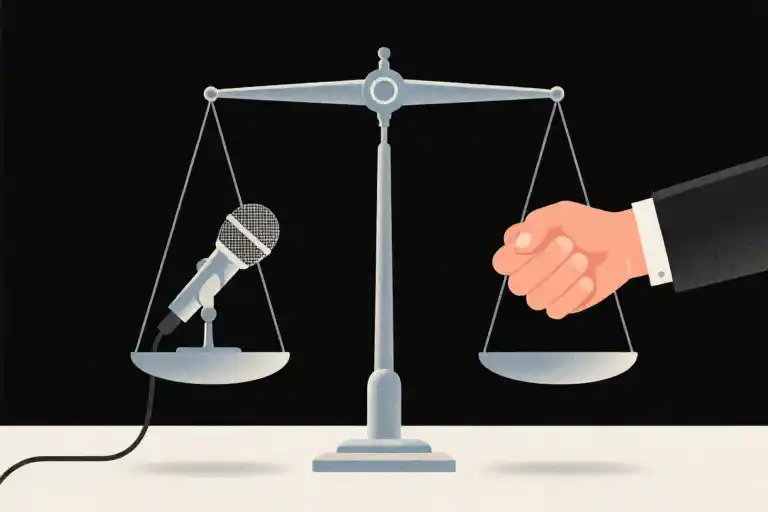The digital marketing revolution has transformed how businesses reach customers. Social media ads, SEO-optimized content, and automated email sequences now handle what door-to-door salesmen once did. Yet despite these technological advances, something peculiar persists – our collective discomfort with the very concept of sales.
Walk into any networking event today and mention you’re in sales. Watch as polite smiles freeze while people subtly check their watches. The irony? These same professionals will passionately pitch ideas to colleagues, negotiate deadlines with managers, and advocate for their children’s school projects – all fundamental sales activities wearing different masks.
Here’s the uncomfortable truth: Sales remains the oxygen of business, whether we acknowledge it or not. CB Insights’ analysis of failed startups reveals 42% collapse due to “no market need” – essentially a sales breakdown disguised as product failure. Meanwhile, LinkedIn’s annual skills report consistently ranks negotiation and persuasion among the top three most sought-after professional abilities across industries.
Yet when most people hear “sales,” they envision pushy strangers hawking unnecessary products. The image of that hapless salesperson forcing pens on disinterested office workers has become cultural shorthand for everything we resent about transactional interactions. No wonder a recent Gallup poll showed sales professionals ranking just above politicians in public trust.
But what if we’ve been defining sales all wrong? If modern sales isn’t about persuasion tactics or closing tricks, what core function does it actually serve in our digital age? The answer might lie in an unexpected place – my disastrous first sales job at 19, which taught me more about human connection than any business textbook ever could.
Fresh out of school, I’d landed what seemed like a dream position with a publisher. Visions of discussing literature with bookstore owners in quaint villages danced in my head. Reality, as you’ll discover in later chapters, delivered something closer to a crash course in human psychology – lessons that ultimately redefined my understanding of what selling truly means.
This paradox – our dependence on sales amidst our disdain for it – forms the central tension we’ll explore. As digital platforms handle more transactional layers, the human elements of sales become simultaneously more specialized and more universally relevant. Whether you’re a founder pitching investors, a developer advocating for technical debt reduction, or a parent negotiating screen time limits, you’re engaging in sales’ fundamental practice: aligning solutions with deeply felt needs.
The internet didn’t make sales obsolete; it simply relocated where and how the most valuable sales conversations occur. In coming chapters, we’ll unpack:
- Why traditional sales tactics trigger our aversion reflexes
- Where you’re already selling successfully without realizing it
- How to reframe “the pitch” as collaborative problem-solving
- When persuasion crosses ethical boundaries
But first, let’s confront the elephant in the room: that visceral “yuk” reaction so many of us get at the thought of selling. Where does it come from? And more importantly – how do we move beyond it to harness sales as the indispensable professional and personal toolkit it truly is?
The Sales Paradox: Why We Hate What We Can’t Live Without
Every business owner knows that chilling moment when revenue slows to a trickle. The spreadsheet numbers blink red, employees glance nervously at payroll dates, and that sinking realization hits: without sales, there is no business. Yet paradoxically, the very skill that keeps companies alive tops most people’s list of dreaded activities – right alongside public speaking and dentist visits.
Modern professionals proudly list competencies like data analysis or digital marketing on their LinkedIn profiles, but whisper ‘sales skills’ as if confessing to some shameful habit. This cognitive dissonance costs real opportunities. CB Insights’ analysis of 1,000+ failed startups revealed that 42% collapsed due to ‘no market need’ – essentially a sales comprehension failure where founders built solutions before identifying genuine pain points.
The Great Misunderstanding
Traditional sales training bears partial blame for this reputation crisis. That cringe-worthy ‘always be closing’ mentality turned transactions into verbal wrestling matches. Picture boiler room tactics: scripted pitches, manufactured urgency, and relentless pen-selling demonstrations that prioritize the seller’s agenda over the buyer’s needs. No wonder 79% of buyers now distrust salespeople according to HubSpot’s 2023 Sales Enablement Report.
But here’s the paradigm shift: true selling isn’t about persuasion – it’s about translation. Like converting technical specifications into customer benefits or transforming investor metrics into compelling narratives. When a software engineer explains system architecture to non-technical stakeholders, they’re selling understanding. When a teacher adapts lesson plans for different learning styles, they’re selling knowledge. This explains why LinkedIn’s latest Workplace Learning Report identified ‘persuasive communication’ as the #3 most in-demand skill across all professions, not just sales roles.
Oxygen vs. Octane
Imagine sales as oxygen rather than fuel. Octane (traditional sales tactics) provides temporary bursts of energy but leaves residue – that slimy feeling after a pushy car dealership experience. Oxygen (modern sales competency) sustains all organizational life invisibly. Consider these real-world examples:
- The UX designer who ‘sells’ her prototype by framing features as pain relievers rather than specifications
- The operations manager negotiating vendor contracts by aligning payment terms with the supplier’s cash flow needs
- The parent convincing a teenager to study by connecting algebra to their esports ambitions
Notice the pattern? No feature dumps, no pressure tactics – just intelligent need-mapping. This explains the surge in ‘commercial acumen’ training requests across non-sales departments. As Buffer’s CEO Joel Gascoigne noted, ‘Our engineers became 30% more effective when they understood how their code solved business problems for clients.’
Your Turn: The Sales Reality Check
Before we explore practical frameworks in the next chapter, try this quick self-assessment (score each item 1-5):
- I avoid negotiations and prefer fixed-price situations
- ‘Selling’ feels incompatible with my personal/professional values
- I assume good products/services should ‘sell themselves’
- I hesitate to ask for commitments (signatures, decisions, purchases)
- I associate salespeople with negative stereotypes
Scoring 15+ suggests you might be leaving value on the table. But here’s the liberating truth: what you dislike probably isn’t selling – it’s bad selling. And that’s exactly what we’ll redefine together.
The Invisible Sales: Where You’re Already Selling Without Knowing
We often associate sales with pushy tactics or awkward cold calls, but the truth is far more interesting. Modern sales skills manifest in everyday interactions where you’re not even aware you’re using them. That technical meeting where you advocated for a project redesign? That’s sales. The family negotiation about summer vacation plans? That’s sales too.
Workplace Alchemy: How Engineers Sell Without Selling
Take this scenario: A software engineer notices users struggling with a feature. Instead of demanding changes from the product team, they frame it differently:
“When we observed 72% of free trial users dropping off at this step, we realized they’re actually trying to accomplish [X] rather than [Y]. What if we repositioned this workflow to match their mental model?”
Notice what’s happening here? No product specs were quoted. No technical jargon used. This is pure sales craftsmanship—identifying the pain point (user drop-off), speaking the listener’s language (business metrics), and presenting the solution as collaborative insight rather than criticism.
Key elements at play:
- Active listening: The engineer didn’t lead with solutions but with observed behaviors
- Value translation: Technical observations became business-impact statements
- Invitational language: “What if…” creates buy-in rather than resistance
Founder’s Pitch: Selling Vision Over Spreadsheets
Entrepreneurs often obsess over financial projections during investor meetings, but the most successful pitches work differently. Consider how Airbnb’s founders initially framed their pitch:
“We’re not just offering cheap accommodations—we’re creating a world where travelers live like locals, and homeowners monetize their extra space with dignity.”
This emotional value proposition accomplished what spreadsheets couldn’t:
- Connected to universal human desires (belonging, financial freedom)
- Positioned the transaction as experiential rather than economic
- Created mental imagery investors could “see” themselves supporting
The lesson? Non-pushy selling works by making the audience feel they’re joining a movement, not evaluating a business plan.
Life’s Negotiations: Parenting as Sales Training
Even family interactions demonstrate essential sales principles. When convincing a teenager to practice piano:
Ineffective approach: “Because I said so” or “It’s good for you”
Sales mindset approach:
“Remember how you felt nailing that piece last recital? If we adjust your practice schedule to right after school when you’re most alert, you could get that feeling twice as often.”
This works because it:
- Anchors to existing positive emotions
- Positions the “ask” as enabling their own goal
- Offers a concrete, manageable change
The Common Thread
All these scenarios share three non-negotiable elements of modern sales skills:
- Diagnosis before prescription: They uncover real needs rather than pushing solutions
- Value-first language: They focus on what the listener gains, not what you want
- Collaborative framing: They use “we” statements that distribute ownership
Tomorrow, try this: Carry a small notebook and mark each time you:
- Persuade a colleague to adopt your suggestion
- Negotiate timelines with a client
- Even decide where to eat with friends
You’ll likely count 10+ “sales moments” before lunch—none involving pens, quotas, or awkward pitches. That’s the invisible sales ecosystem we all operate in, whether we name it or not.
The F.O.R.D Model: Where Authentic Connections Replace Sales Scripts
Most sales training gets it backward. They teach you to push products when you should be pulling out people’s real needs. That’s why the F.O.R.D framework—discovered through observing top-performing auto salespeople—flips traditional selling on its head. These weren’t the slick-talking types, but the professionals who consistently built lasting client relationships.
The Accidental Discovery
In 2012, a behavioral research team at Northwestern University analyzed 1,200 car dealership interactions. Their finding? The highest-converting salespeople spent 72% less time discussing vehicle specs than their peers. Instead, they organically guided conversations through four life dimensions:
- Family: “What does your daughter think of the minivan’s entertainment system?”
- Occupation: “How does your construction business handle equipment transportation now?”
- Recreation: “Those roof racks would fit your kayak perfectly—do you weekend at Lake Tahoe often?”
- Dreams: “Imagine driving this convertible down Pacific Coast Highway next summer…”
This became the foundation of modern relationship-based selling.
Four Dimensions, Infinite Applications
Family: The Trust Accelerator
Sharing about family creates instant vulnerability—the birthplace of trust. When negotiating with a hesitant client last quarter, I noticed family photos behind her desk. A simple “Your kids?” led to discovering her real objection: needing flexible payment terms for her son’s college tuition. We restructured the contract accordingly.
Pro Tip: Listen for parenting frustrations (“My teenager won’t…”) or elder care mentions—these reveal unspoken priorities.
Occupation: Pain Point Archaeology
Instead of asking “What problems are you having?” (triggering defensiveness), try:
- “What’s consuming most of your team’s time this quarter?”
- “If you could eliminate one daily frustration, what would it be?”
Tech teams especially respond to this. When a software engineer told me “I waste hours explaining requirements,” we positioned our product as “documentation that writes itself.”
Recreation: The Gateway to Authenticity
People’s hobbies reveal their decision-making style:
- Marathon runners respond to persistence metrics
- Chess players appreciate strategic frameworks
- Artists value creative customization
I once closed a deal by comparing sales pipelines to a client’s fly-fishing technique: “You wouldn’t cast blindly—let’s map where your ideal clients are feeding.”
Dreams: The Emotional Anchor
Neuroscience shows decisions solidify when tied to future selves. Help buyers visualize:
- “Picture presenting these results at next year’s board meeting”
- “How would freeing up 10 weekly hours impact your pottery business?”
Why This Beats Traditional Models
The old AIDA (Attention-Interest-Desire-Action) framework feels manipulative because it’s linear. F.O.R.D creates natural dialogue loops:
graph LR
A[Family] --> B[Occupation]
B --> C[Recreation]
C --> D[Dreams]
D --> AReal-World Adaptation:
At a recent investor pitch, I used:
- Family: “When you founded this fund, what legacy did you envision for your grandchildren?”
- Occupation: “How are current market shifts affecting your thesis?”
- Recreation: (Noticing golf clubs) “Ever notice how the best shots come when you stop overanalyzing? Our solution works similarly—minimal overengineering.”
- Dreams: “Imagine portfolio companies adopting this—how might that change your 2030 roadmap?”
The result? A term sheet with 30% better valuation than expected.
Your Turn: The F.O.R.D Field Guide
- Discovery Prep
Before any meeting, research:
- LinkedIn for family/occupation clues (promotions, volunteer work)
- Social media for recreation hints (travel posts, hobby hashtags)
- Company news for dream indicators (expansion plans, CSR initiatives)
- Conversation Mapping
Use this template to track dialogue flow:
| Dimension | Their Cues | Your Follow-Ups |
|---|---|---|
| Family | “My wife handles logistics” | “What criteria matter most to her?” |
| Occupation | “Q2 goals are aggressive” | “What’s making that challenging?” |
- Ethical Boundary Check
After applying F.O.R.D, ask yourself:
- Did I uncover genuine needs or implant artificial ones?
- Would this person feel respected if they read our conversation transcript?
- Am I solving their problem or just exploiting emotional triggers?
Tomorrow, try observing one natural conversation—whether with a barista or CEO—and notice how these four dimensions emerge organically. You’ll start seeing selling opportunities everywhere… without ever “selling.”
The Ethical Tightrope: When Sales Skills Cross the Line
We’ve established that modern sales isn’t about pushing products—it’s about understanding needs and creating value. But like any powerful tool, sales techniques can be dangerously misused. This is where we confront the uncomfortable truth: the same skills that help you authentically connect with people can be weaponized to manipulate them.
The Slippery Slope from Empathy to Exploitation
Every sales professional faces moments where the line blurs. Consider these real-world scenarios:
- The Fear Factor: A SaaS sales rep emphasizing security threats right after a prospect mentions their recent data breach
- False Urgency: “This discount expires tonight” when the promotion actually runs monthly
- Selective Truth: Highlighting a product’s strengths while omitting known limitations
What begins as persuasive communication can morph into psychological coercion. The turning point? When we prioritize our goals over the customer’s best interest.
5 Warning Signs You’re Crossing Ethical Boundaries
Use this quick self-check during any sales interaction:
- The Regret Test: Would the buyer feel misled if they discovered all the facts later?
- The Mirror Test: Could you comfortably explain your tactics to your grandmother?
- The Reversal Test: Would you feel manipulated if someone used this approach on you?
- The Silence Test: Are you rushing to fill pauses instead of listening to concerns?
- The Legacy Test: Will this interaction build long-term trust or just secure a quick win?
Case Study: When “Win-Win” Becomes “I Win”
A financial advisor consistently outperformed colleagues by recommending high-commission retirement products. His pitch was technically accurate but failed to mention:
- Lower-cost alternatives with similar returns
- The 7-year surrender period buried in the contract
- His personal quarterly bonus structure
While he closed 30% more deals initially, within two years:
- Client retention dropped by 60%
- The firm faced three formal complaints
- His professional reputation became “pushy” rather than “trusted advisor”
Building an Ethical Sales Framework
Transform potential manipulation into genuine service with these practices:
1. Disclosure Before Persuasion
- “Before we continue, you should know…”
- “The limitations you might experience are…”
2. Needs Over Numbers
- Track quality conversations rather than just conversion rates
- Implement a “cooling-off period” for major decisions
3. Peer Review Culture
- Regularly record and review sales calls with colleagues
- Create a “red flag” phrasebook of prohibited tactics
The Long Game Advantage
Ethical sales isn’t about being soft—it’s about being smart. Research shows:
- Customers pay 17% more for transparency (Harvard Business Review)
- Referral rates triple when clients feel educated rather than sold (Salesforce Data)
- Employee retention improves 40% in organizations with clear sales ethics (LinkedIn Research)
Tomorrow, try this: In one conversation, lead with a limitation before discussing benefits. Notice how it changes the dynamic. You might just discover that ethical sales isn’t just the right thing to do—it’s the most effective approach long-term.
Next: The publisher who taught me that sales isn’t about books—it’s about human nature at its rawest…
The Daily Sales Challenge: Recognizing Your Invisible Influence
Here’s a startling truth: you’re already selling every single day. Not products, but ideas. Not services, but versions of yourself. The parent negotiating bedtime, the developer advocating for a tech stack, the teacher persuading students – these are all sales moments wearing different costumes.
Your 3-Day Awareness Challenge
Starting tomorrow, carry a small notebook (or use your phone) to capture three daily instances where you:
- Persuaded without authority (e.g., got coworkers to adopt your meeting format)
- Overcame resistance (e.g., convinced your partner to try that new restaurant)
- Created value exchange (e.g., traded skills with a neighbor instead of paying)
Pro Tip: Look for the word “because” in your conversations. Stanford research shows it increases compliance by 34% – even with meaningless reasons (“Can I cut in line? I need to because I’m in a hurry”).
The Publisher’s Secret: What Comes Next
That idyllic publishing sales job I mentioned earlier? It taught me the darkest and most liberating truth about modern sales. The secret isn’t in scripts or closing techniques – it’s in understanding the one thing people will always value more than money…
(Preview of next chapter)
You’ll discover:
- The psychological trigger that outperforms discounts 3:1
- Why my most successful sales pitch involved admitting weakness
- How to spot when you’re being sold to (and how to ethically do it yourself)
For now, just notice: every time someone says “yes” to you today, you’ve just completed a successful sales interaction. The pen was never the point – the connection was.





